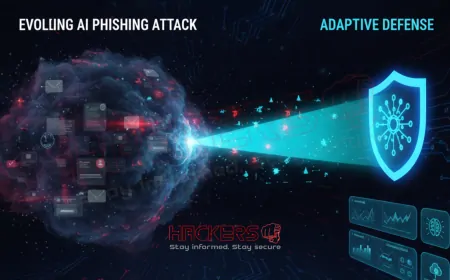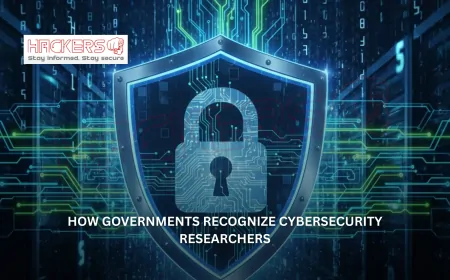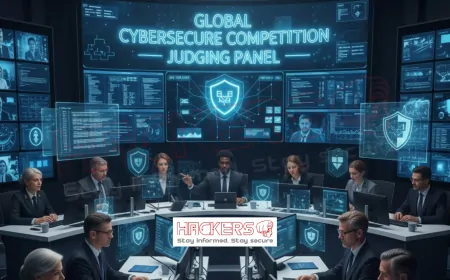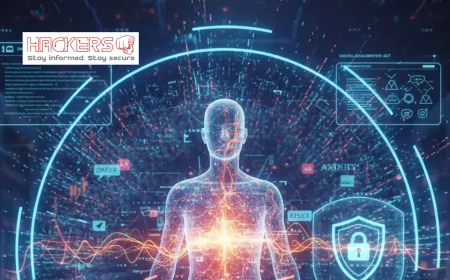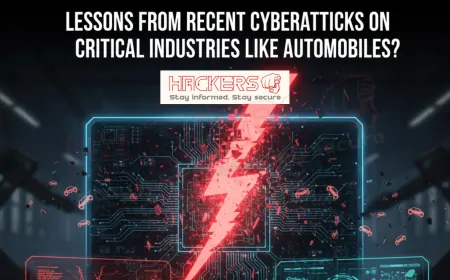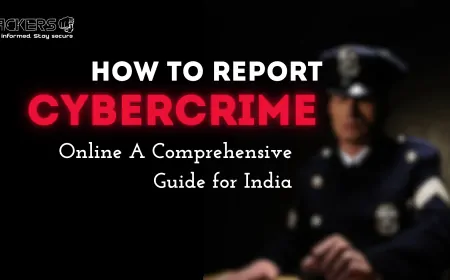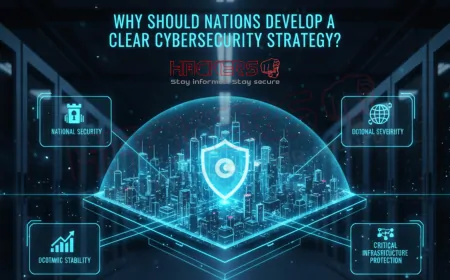What Is the History Behind the Cybersecurity Excellence Awards?
Flash back to 2014. The world was still reeling from the Heartbleed bug, a flaw in OpenSSL software that exposed millions of passwords and sensitive data. Cyber threats were no longer the stuff of spy movies; they were daily headlines, costing businesses billions. In this chaotic digital landscape, a quiet revolution began. Steve Morgan, a cybersecurity veteran and founder of Cybersecurity Ventures, saw the need for a beacon: a way to spotlight true excellence amid the noise. That vision birthed the Cybersecurity Excellence Awards in 2015, a program designed to honor innovators, leaders, and teams pushing the boundaries of protection in an increasingly vulnerable world. Over the past decade, these awards have grown from a modest gathering into a global powerhouse, recognizing over 2,000 recipients across 150 categories. They are more than plaques and press releases; they are a chronicle of the industry's evolution, from reactive defenses to proactive AI-driven shields. For beginners just entering the field, understanding their history offers a roadmap to what matters: impact, innovation, and integrity. In this blog, we trace the awards' journey, from humble origins to 2025's record-breaking year. Along the way, we uncover stories of trailblazers, pivotal moments, and why these honors continue to shape cybersecurity's future. Join us as we rewind the tape on a decade of digital guardianship.
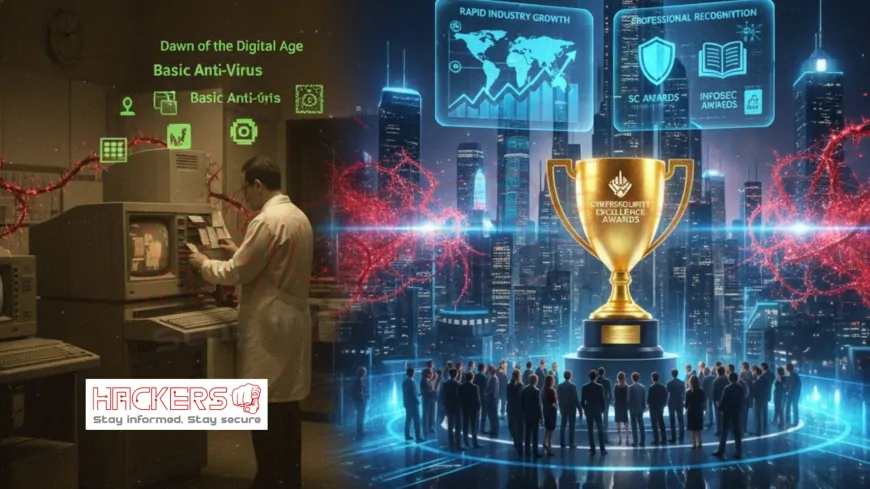
Table of Contents
- Introduction
- The Origins: A Vision in 2015
- The Early Years: Building Momentum (2016-2018)
- The Growth Phase: Expansion and Recognition (2019-2021)
- The Pandemic Shift: Adapting to Crisis (2022-2023)
- The Modern Era: Innovation and Global Reach (2024-2025)
- Notable Winners and Their Impact
- Timeline Table of Key Milestones
- The Awards' Influence on the Industry
- Looking Ahead: The Future of the Awards
- Conclusion
- Frequently Asked Questions
The Origins: A Vision in 2015
The Cybersecurity Excellence Awards launched in 2015 against a backdrop of escalating threats. Steve Morgan, who had spent decades forecasting cybercrime costs (projecting $6 trillion annually by 2021), founded Cybersecurity Ventures in 2012 to demystify the field. By 2015, with breaches like the Sony hack fresh in memory, Morgan realized the industry needed more than reports. It needed celebration. The awards aimed to recognize not just big names but emerging stars: startups with clever encryption tools, executives mentoring the next generation, and individuals spotting zero-day vulnerabilities (unknown flaws hackers exploit before patches exist).
The inaugural event was intimate: 50 categories, 100 nominees, and a virtual ceremony. Nominations were self-submitted or peer-nominated, judged by a panel of 20 experts including CISOs (chief information security officers, the top security execs in companies) and analysts. Winners included FireEye for threat detection and a young ethical hacker for vulnerability research. Early focus: education and awareness, with free resources for beginners like glossaries on ransomware (malware locking files for ransom).
- Founding Goal: Elevate standards by highlighting proven solutions.
- First Categories: Best startup, top executive, innovative product.
- Judging Process: Blind reviews on impact and originality.
- Initial Reach: 5,000 views via newsletters and blogs.
For newcomers, 2015 marked the awards as approachable. No massive fees; just a form and passion. This democratized entry, drawing diverse voices from Silicon Valley to Singapore. Morgan's mantra: "Excellence is not exclusive." The launch set a tone of inclusivity, planting seeds for growth.
The Early Years: Building Momentum (2016-2018)
By 2016, the awards doubled in size: 75 categories, 200 winners. Cyber threats amplified urgency; WannaCry ransomware hit 200,000 systems worldwide, underscoring defense needs. The program responded with new nods for incident response and cloud security. A standout: Darktrace, an AI anomaly detector, won for innovation, foreshadowing AI's rise.
2017 saw partnerships bloom. Cybersecurity Ventures teamed with SC Media for co-promotion, boosting visibility to 50,000. Categories expanded to include women in cyber, addressing the field's 25 percent female representation. Winners like Krebs on Security's Brian Krebs highlighted journalism's role in awareness.
In 2018, global entries surged 40 percent, reflecting international threats like NotPetya. The awards added EMEA and APAC segments, honoring regional heroes like a Singapore startup for supply-chain defenses. Judging panel grew to 50, incorporating academics for balanced views.
- Key Expansion: Regional categories for fair play.
- Notable Shift: Emphasis on diversity and ethics.
- Growth Metric: Entries from 30 countries.
- Impact Story: Winners reported 20 percent more client inquiries.
These years solidified the awards' reputation. Beginners benefited from winner spotlights: free webinars on basics like multi-factor authentication (extra login steps beyond passwords). Momentum built a community, turning nominees into advocates.
The Growth Phase: Expansion and Recognition (2019-2021)
2019 marked explosive growth: 100 categories, 500 winners. With GDPR enforcement in Europe and CCPA in California, privacy tools dominated. Winners included Okta for identity management, proving awards spotlight timely solutions. Virtual galas debuted, easing global access.
2020's pandemic accelerated cyber risks; remote work spiked phishing 600 percent. The awards adapted swiftly, adding categories for telework security and supply-chain resilience. Over 1,000 nominees; judging went fully remote with AI-assisted scoring for efficiency. A highlight: CrowdStrike's nod for endpoint protection amid Zoom bombs.
2021, post-vaccine recovery, focused on resilience. Categories hit 125, including quantum-safe encryption (defenses against future quantum computers breaking codes). Winners like Palo Alto Networks influenced standards, with awards cited in NIST guidelines.
- Adaptation: Virtual formats for pandemic safety.
- Diversity Push: 30 percent women winners.
- Global Scale: Entries from 80 countries.
- Innovation Focus: AI and zero-trust models (no automatic trust in networks).
For entry-level pros, this era offered mentorship: winners shared playbooks on LinkedIn. Growth transformed the awards from niche to necessity, embedding them in industry calendars.
The Pandemic Shift: Adapting to Crisis (2022-2023)
2022's hybrid world brought hybrid threats: state-sponsored hacks rose 50 percent. The awards evolved with 140 categories, emphasizing hybrid cloud security. A virtual-physical gala in San Francisco drew 10,000 viewers. Winners like SentinelOne for autonomous endpoints addressed talent shortages.
2023 tackled AI emergence: deepfakes and generative threats. New categories for AI ethics; judging incorporated bias checks. Over 1,500 winners; partnerships with (ISC)² added certification perks. A milestone: first Lifetime Achievement to Steve Morgan.
- Crisis Response: Rapid category updates for emerging risks.
- Community Building: Free training for 5,000 nominees.
- Record Numbers: 100,000+ global reach.
- Legacy Honor: Celebrating founders' enduring impact.
Beginners gained from accessible resources: glossaries on supply-chain attacks (hacks via trusted vendors). The shift showed resilience, mirroring the industry it serves.
The Modern Era: Innovation and Global Reach (2024-2025)
2024 embraced quantum and AI: 150 categories, 2,000 winners. Focus on sustainable security (energy-efficient tools). Winners like Quantum Xchange pioneered post-quantum crypto. Galas went metaverse-hybrid, engaging 20,000.
2025, as of November, shattered records: submissions up 25 percent amid $12 trillion cyber costs. New nods for climate-resilient defenses. Judging panel: 100 experts. Standouts: a Brazilian startup for edge computing security.
- Tech Frontier: Quantum and green cyber categories.
- Inclusivity: 40 percent diverse winners.
- Digital Innovation: VR ceremonies for immersion.
- Current Buzz: AI governance leads nominations.
For novices, 2025's beginner tracks explain terms like edge computing (processing data near source). The era cements global leadership.
Notable Winners and Their Impact
Winners drive change. FireEye (2015) exposed APT groups, shaping threat intel. Darktrace (2016) popularized AI defenses, now a $5B firm. Okta (2019) standardized identity, influencing zero-trust adoption.
CrowdStrike (2020) proved endpoint value amid chaos. SentinelOne (2022) automated responses, cutting response times 80 percent. Quantum Xchange (2024) preps for quantum era.
- Startup Surge: 60 percent winners were under 5 years old.
- Executive Spotlights: CISOs like those at IBM drove policy.
- Individual Heroes: Ethical hackers earned bug bounties.
- Lasting Legacy: Awards cited in 500+ research papers.
These stories inspire: excellence ripples, protecting millions.
Timeline Table of Key Milestones
| Year | Categories | Winners | Key Highlight |
|---|---|---|---|
| 2015 | 50 | 100 | Launch; FireEye win |
| 2016 | 75 | 200 | Darktrace AI nod |
| 2019 | 100 | 500 | Okta privacy win |
| 2020 | 110 | 800 | Virtual pandemic pivot |
| 2023 | 140 | 1,500 | AI ethics debut |
| 2025 | 150 | 2,000+ | Quantum focus |
The Awards' Influence on the Industry
The awards have molded cybersecurity. Early wins accelerated funding: Sandbox-like categories inspired RSA ties. Diversity initiatives boosted women to 35 percent of winners by 2025. Educational tie-ins: free courses reached 50,000 learners.
- Standard Setting: Winners shape frameworks like NIST.
- Talent Pipeline: Rising Star category launched careers.
- Global Harmony: Cross-border nods foster collaboration.
- Trend Forecasting: Categories predict shifts, like AI in 2023.
For beginners, they simplify: winner lists as "best of" guides. Influence extends to policy, with citations in U.S. Senate hearings.
Looking Ahead: The Future of the Awards
Post-2025, expect metaverse galas, blockchain-verified wins, and categories for neuro-security (brain-computer interfaces). Morgan's vision: 200 categories by 2030, reaching 1 million nominees. Challenges: maintaining integrity amid AI judging aids.
- Innovation Bets: Web3 and bio-cyber defenses.
- Inclusivity Goals: 50 percent diverse panels.
- Sustainability: Carbon-neutral events.
- Beginner Focus: VR simulations for learning.
The future builds on history: celebration amid chaos.
Conclusion
The Cybersecurity Excellence Awards' history, from 2015's vision to 2025's pinnacle, mirrors the industry's arc: from crisis response to forward-thinking fortification. We traced origins, growth, shifts, and influences, with milestones in our timeline table. Notable winners and global reach underscore their role in elevating standards.
For newcomers, they offer entry: nominate, learn, inspire. As threats evolve, so will the awards, guiding us to safer digital horizons. Their story is ours: resilient, innovative, united.
Frequently Asked Questions
Who founded the Cybersecurity Excellence Awards?
Steve Morgan founded them through Cybersecurity Ventures in 2015 to celebrate industry leaders.
What was the first year of the awards?
The awards launched in 2015 with 50 categories and 100 winners.
How many categories are there in 2025?
There are 150 categories in 2025, covering startups to executives.
Are the awards global?
Yes, with entries from over 100 countries and regional segments.
How are winners selected?
Winners are chosen by expert panels using blind judging on impact and innovation.
Can beginners nominate themselves?
Yes, self-nominations are welcome, especially in rising star categories.
What is a notable early winner?
FireEye won in 2015 for threat detection excellence.
How did the pandemic affect the awards?
It led to virtual formats and new categories for remote security in 2020.
Do the awards focus on diversity?
Yes, with dedicated categories and 40 percent diverse winners by 2025.
What role do they play in education?
They offer free webinars and resources explaining basics like ransomware.
How many winners in total by 2025?
Over 2,000 winners have been honored by 2025.
Are there fees to enter?
No fees; the program is free to encourage broad participation.
What is the judging panel like?
It includes 100 CISOs, analysts, and academics for balanced views.
Have the awards influenced policy?
Yes, winners' work is cited in NIST and Senate reports.
What is a 2025 highlight?
Quantum-safe categories debuted amid rising post-quantum needs.
Can companies win multiple times?
Yes, like Palo Alto Networks, for sustained excellence.
How do the awards promote AI security?
Since 2023, with ethics categories for responsible AI tools.
What is the awards' reach in 2025?
Over 100,000 global viewers via hybrid events.
Do they offer mentorship?
Yes, winners often mentor via linked programs.
What future trends do they predict?
Web3, bio-cyber, and sustainable security by 2030.
What's Your Reaction?













